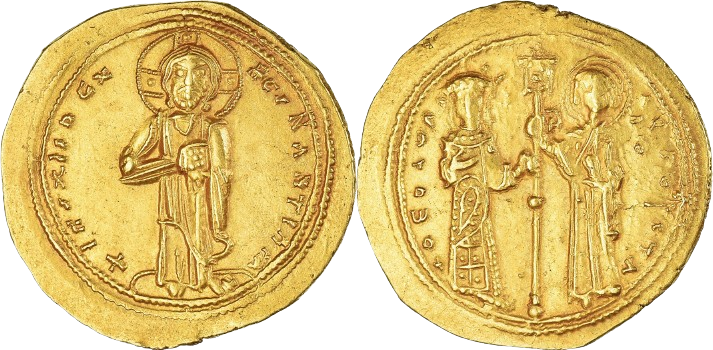In the Byzantine Empire, which persisted after the collapse of the Western Roman Empire, the monetary system was characterized by the utilization of two primary types of coins. The first was the gold solidus, a valuable and widely recognized currency. The second comprised a diverse range of bronze coins, each possessing distinct denominations and values.As the Byzantine Empire advanced through its historical timeline and approached its eventual decline, notable changes occurred in its currency composition. Towards the later stages of the empire, there was a notable transition away from gold coins. Instead, the prevalent currency included silver stavrata, reflecting a shift in the material used for monetary exchange.
This coin called the Histamenon was a special type of gold coin made in the Byzantine Empire, which was located in the eastern part of Europe. These coins were first created by Emperor Constantine IX Monomachos and continued to be made by other emperors after him. They were pretty unique because they usually had pictures of the emperor on one side and an image of Jesus Christ on the other. This was because the Byzantine Empire had a strong connection to the Christian Church, and these coins reflected that connection by featuring religious figures. Today, these coins can be worth from 800 up to thousands of dollars.
